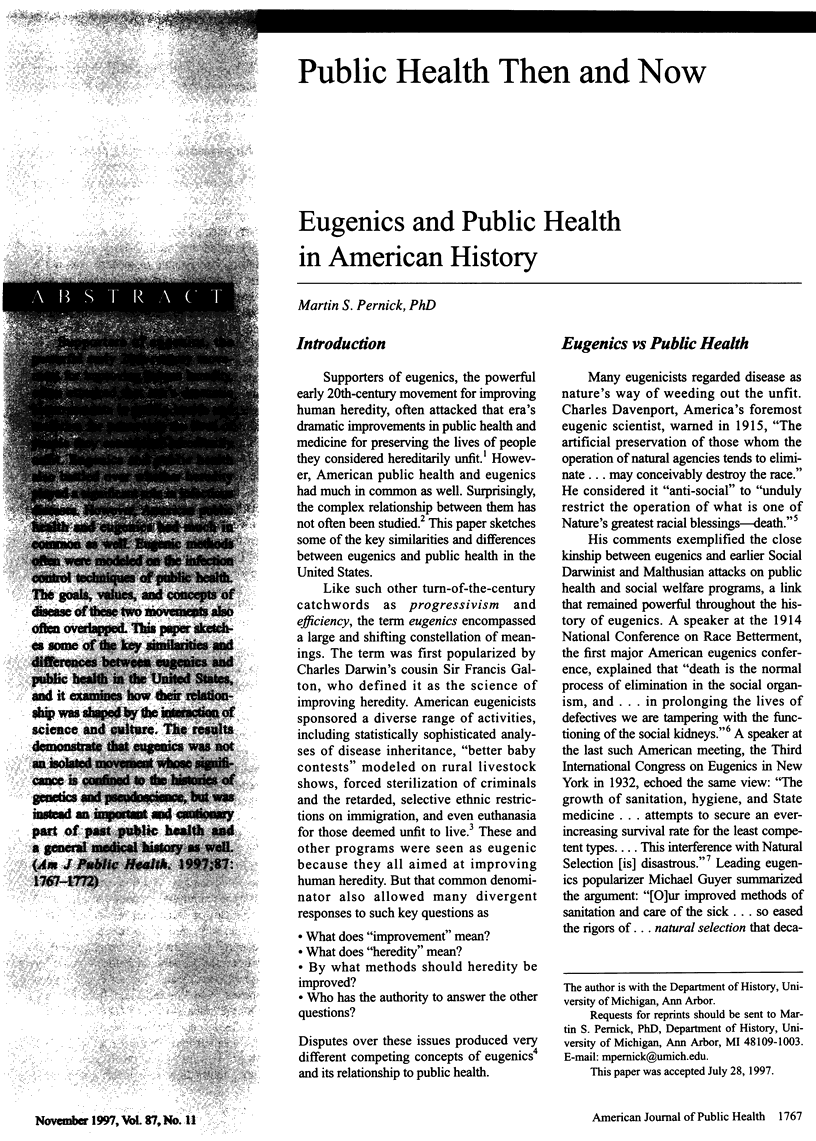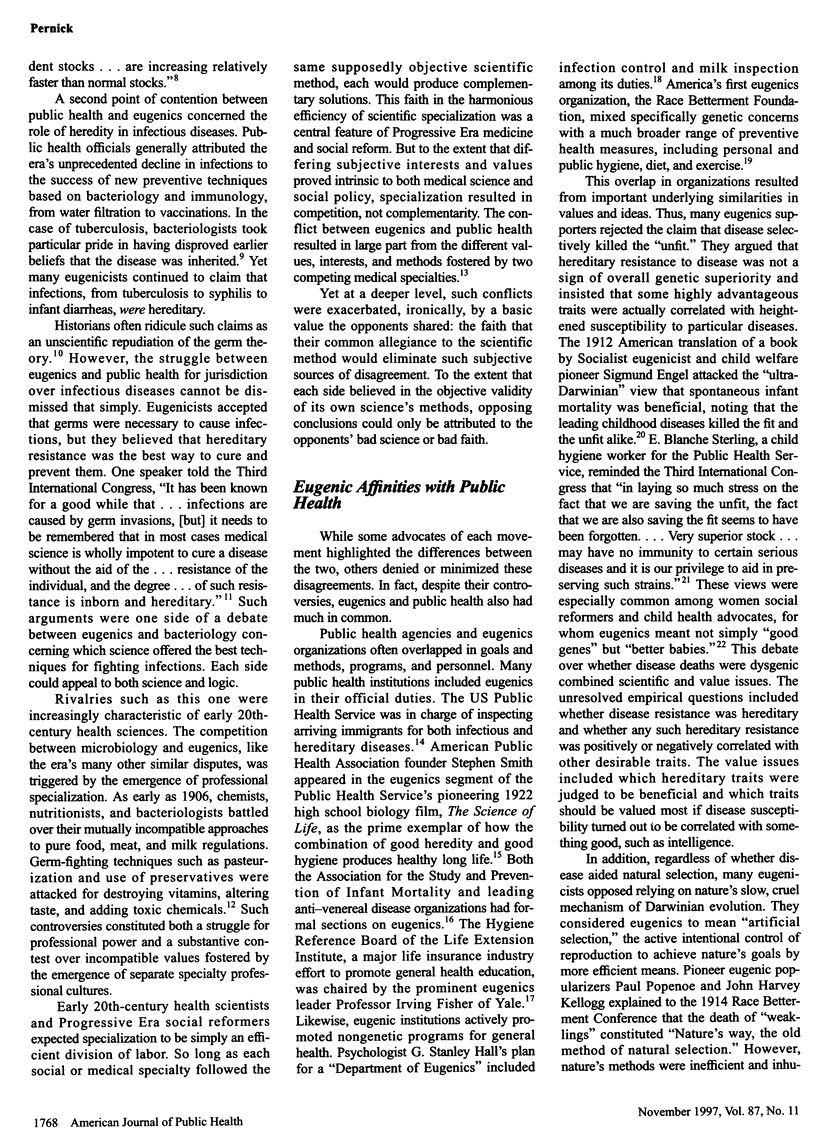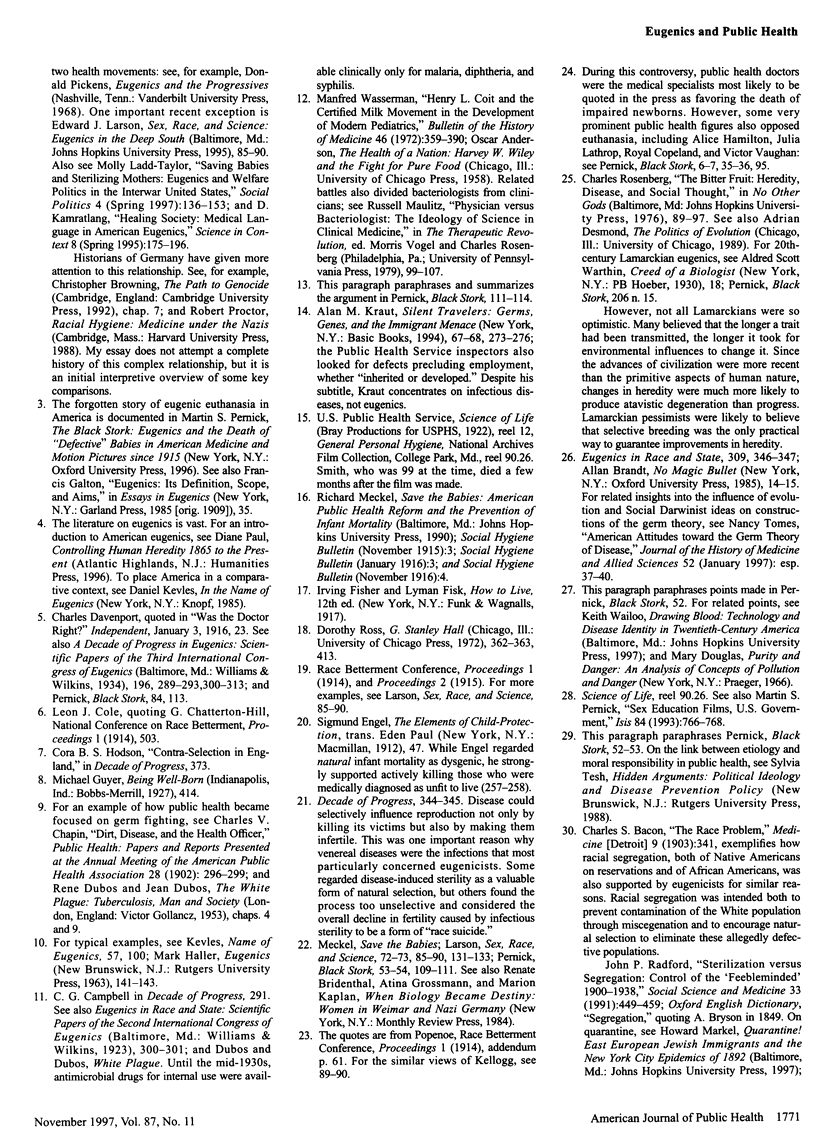Abstract
Supporters of eugenics, the powerful early 20th-century movement for improving human heredity, often attacked that era's dramatic improvements in public health and medicine for preserving the lives of people they considered hereditarily unfit. Eugenics and public health also battled over whether heredity played a significant role in infectious diseases. However, American public health and eugenics had much in common as well. Eugenic methods often were modeled on the infection control techniques of public health. The goals, values, and concepts of disease of these two movements also often overlapped. This paper sketches some of the key similarities and differences between eugenics and public health in the United States, and it examines how their relationship was shaped by the interaction of science and culture. The results demonstrate that eugenics was not an isolated movement whose significance is confined to the histories of genetics and pseudoscience, but was instead an important and cautionary part of past public health and a general medical history as well.
Full text
PDF





Selected References
These references are in PubMed. This may not be the complete list of references from this article.
- Radford J. P. Sterilization versus segregation: control of the 'feebleminded', 1900-1938. Soc Sci Med. 1991;33(4):449–458. doi: 10.1016/0277-9536(91)90327-9. [DOI] [PubMed] [Google Scholar]
- Soper F. L. Rehabilitation of the eradication concept in prevention of communicable diseases. Public Health Rep. 1965 Oct;80(10):855–869. [PMC free article] [PubMed] [Google Scholar]


